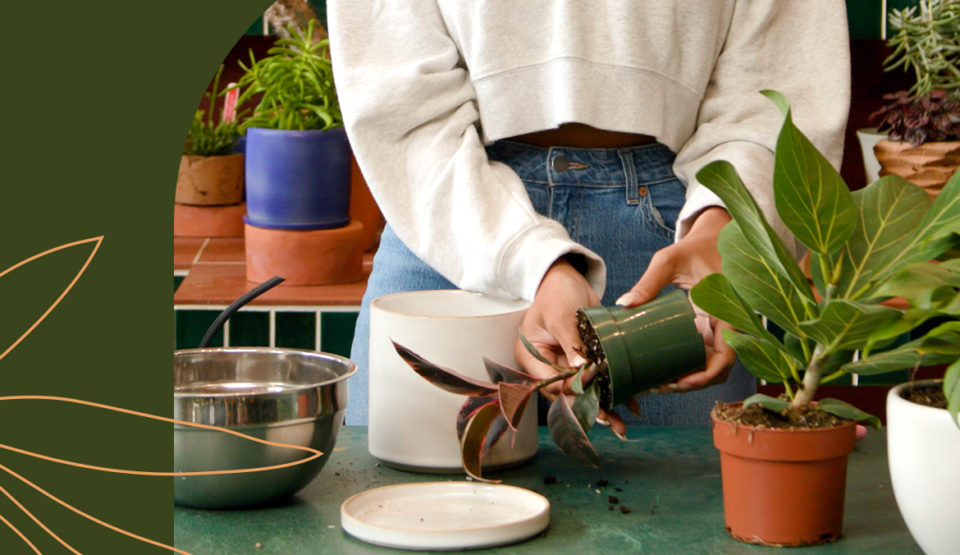Gardening and indoor plant cultivation have seen a resurgence in recent years. Yet, while most plant enthusiasts focus on the quality of soil and frequency of watering, there’s another vital element that’s often overlooked: the pot. Understanding the science of potting, particularly the correlation between a plant’s health and its container, can be a game-changer for horticulture enthusiasts.
The Underrated Importance of Flower Pots
Flower pots aren’t just decorative objects to make our living spaces or gardens look pretty. They play a crucial role in the overall health and development of the plant. Here’s how:
- Air Circulation: A pot made of breathable material, such as clay or terracotta, allows the roots to access fresh air. This promotes healthier root systems and reduces the risk of root rot.
- Drainage: Overwatering is a common plant killer. Pots with drainage holes help prevent water logging by allowing excess water to escape.
- Root Restriction: Pots help in controlling the size of a plant. Some plants need room to grow, while others prefer a more restricted environment to thrive.
Key Features of Ideal Flower Pots
Not all flower pots are made equal. Depending on the plant’s needs, certain pots might be more beneficial than others. When choosing a pot, consider these features:
- Material: The substance a pot is made of can affect many factors, such as moisture retention, weight, and heat absorption. Common materials include plastic, terracotta, ceramic, metal, and wood.
- Size: A pot that’s too small can stunt a plant’s growth, while one that’s too large might lead to overwatering. It’s essential to pick a size appropriate for the plant’s current size and expected growth.
- Shape: The shape can impact root development. Deep pots are suitable for plants with long taproots, while shallow, wide pots are ideal for plants with more expansive root systems.
- Color: Light-colored pots reflect sunlight, keeping the soil relatively cooler, while dark-colored pots absorb more heat.
The Science Behind Pot Selection for Different Plants
Different plants have unique needs. What works for a cactus won’t necessarily work for an orchid. Here’s a breakdown:
Succulents and Cacti
- Material: These plants prefer pots made of porous material like terracotta. It allows the soil to dry out faster, mimicking their natural desert environment.
- Drainage: Essential. Succulents and cacti thrive in well-draining soil, so a pot that retains too much moisture can be detrimental.
Orchids
- Material: Clear plastic or specialized orchid pots are often preferred. These allow light to reach the roots, which is beneficial for many orchid varieties.
- Drainage: Orchids need excellent drainage to prevent their roots from sitting in water.
Ferns
- Material: Non-porous pots such as plastic or glazed ceramic are ideal. They help retain moisture, which ferns love.
- Drainage: While ferns like moist soil, they don’t want to be waterlogged. Ensure the pot has good drainage.
Tips for Maintaining Plant Health in Flower Pots
Once you’ve selected the perfect pot, ongoing care is essential to ensure plant health:
- Regularly Check Soil Moisture: Stick your finger an inch into the soil. If it’s dry, it’s time to water.
- Rotate Your Plants: This ensures even growth, as all sides receive equal sunlight.
- Clean Your Pots: This prevents the buildup of salts and minerals that can harm plants.
- Repot When Necessary: As plants grow, their roots might outgrow their current pot. If you see roots coming out of the drainage holes or notice slowed growth, consider repotting.
Conclusion
In the world of horticulture, flower pots are not merely aesthetic choices. They are instrumental in ensuring plant health and optimizing growth conditions. By understanding the science behind potting, even a novice gardener can make informed decisions that will set their plants up for success. After all, when our plants thrive, the joy they bring into our lives is unparalleled.

